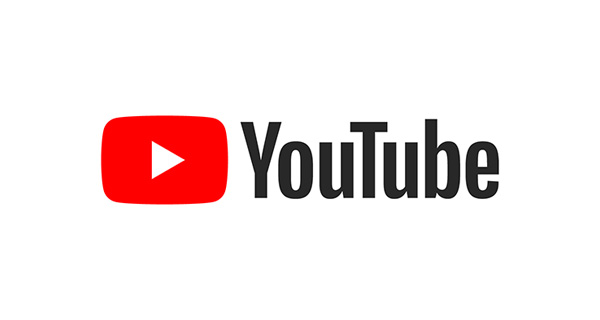⛑ Server Upgrade Soon. Same Service, just faster.

YouTube is the biggest free video hosting platform in the world with an average of 14.8 billion visitors every single month. So, if you have not tapped into the world of making money with YouTube videos, you’re seriously missing out big time.
What You Will Discover
- Finding the right product to promote
- Best types of videos
- How to create an awesome channel
- Nailing the on-site SEO
- How to connect to other websites
- The best form of monetization
In this YouTube Marketing tutorial, I’m going to walk you through step-by-step exactly how you can make money with the videos you upload on YouTube.
We’ll be mostly focusing on ranking on Youtube rather than Google. If you want to learn more about ranking in Google, be sure to read Blueprint to building a profitable niche site.
I have made sure that this is 100% newbie-friendly, so even if you have zero experience, that’s OK. Just follow the guide and you’ll be good.
7 Steps for success in YouTube marketing…
- Finding products to promote
- Keyword research
- Shooting your videos
- Uploading your videos
- On-site Search Engine Optimization
- Off-Site Search Engine optimization
- Monetization
Step #1: Finding products to promote
When it comes to finding products to promote, the very first thing you want to make sure of is, YouTube video promotions are allowed. Some affiliate products have specific requirements on how you can promote them, so make sure YouTube is one of them.
An easy place to do your research is by using offervault.com. You can read this article on How To Use OfferVault Here.
To make life easy, I decided to promote products on ClickBank since they are very YouTube-friendly. Want to know how to pick winning and profitable products on Clickbank?
After browsing through ClickBank for a few minutes, I’ve decided to promote Bikini Butts as our demo. Why? I’ll leave that for another time 🙂

Step #2: Keyword Research
After we have found a product to promote, we want to spend some time getting to know our market and the type of information they are looking for.
The best way to do this is by actually watching the sales video itself! You’ll be surprised how much you’ll learn about the product and the type of audience it is intended for.
Be sure to take notes of all the angles and what type of pain or desire the sales video is attacking and use it to your advantage.
These are just a few obvious ones from watching the sales video in our example that I came up with.
- A desire for a flat stomach
- A desire for nice toned butt
- No need for dieting, cardio, or long hours in the gym
- Only 90 minutes spent on the goal per week
- Skinny genes burn fat naturally
- Cellulite elimination
- No magic pills
As you can see, the product focuses on having a nice butt and a flat stomach. The best part about the sales video is that real results are being shown live, which is good for conversions.
The proof is in the pudding.
So now that we have an idea of what the product is about and what they are selling, the next part is to do some more in-depth keyword research.
I like to use Long Tail Pro but of course, you can just use Google Keyword Planner. If you don’t know how to use either of those, please check out the guide on an in-depth tutorial on how to do proper keyword research.
I came up with a list of keywords that we can target to get eyeballs to our video. This is just a small list of keywords to get us started.
- how to get a flat toned stomach
- tips for a flat stomach
- get a flat stomach fast
- exercise for a flat stomach
- buttocks exercises
- get rid of cellulite
- how to get rid of cellulite fast
- how to get rid of cellulite on bum
A quick recap on where we are so far…
We found a product to promote, we know what our market wants and the information they are looking for, we generated a list of keywords that we can use to get laser targeted traffic to our offer.
The next step now is to prepare and shoot our videos!
Step #3: Shooting Your videos
There are only two ways to go about this. You either shoot the video yourself or you outsource it to someone else. Since this product is targeted at females, the most obvious thing for me to do is outsource it to a female.
So let’s hop over Fiverr.com and look for people who will shoot this video for me. An example is this gig here.
Keep in mind that sometimes there is a time limit to the videos, so you might need to purchase 2-3 gigs depending on the service that the Fiverr seller offers. Either way, it’s pretty cheap considering we don’t have to shoot and edit our videos.
Most of the video gigs will require you to send in a script, so that part you can’t avoid.
Just write a simple script that is related to a specific keyword you want to target. If you’re planning to upload multiple videos targeting different keywords, then you have to write many scripts and purchase many gigs.
Again, this is an investment required if you don’t want to shoot your videos.
Once you’re happy with the video, let’s move on to the next step.
Step #4: Creating your Youtube Channel and Uploading your videos
I know this is basic stuff, but if you want to upload videos to YouTube, you will need a Gmail account and a YouTube account. So, if you haven’t got one yet, do create those accounts now before reading on.
Next, decide on your channel goals. Do you want to have a niche-related channel with lots of videos? Or, do you just want to have a channel built around that one video?
Each option has its pros and cons.
With multiple videos in a channel, you are essentially creating an authority channel within that niche, which will help you rank higher. But, if you do anything that crosses the line, you risk losing your channel and all of your videos (and hence, an income source). Don’t put your eggs in one basket, I believe the saying goes.
On the other hand, if you have one video in your channel, you could name that channel using your keywords, which will also enhance your likelihood to rank, but your channel won’t have any kind of presence and you won’t gain any subscribers.
Now, before uploading your videos, make sure the file you’re uploading contains the keyword you’re targeting.
For example, if the keyword you’re trying to rank for is “How To Get A Nice Tone Butt”, then you want to name the video file “How To Get A Nice Tone Butt” before uploading it to YouTube. To do this, just ‘right-click the video file, head over to ‘Rename’ then change it to your required keyword.
Some people say this helps with ranking, while others say it doesn’t. At the end of the day, there is no way to test it, but there’s no real harm in doing it anyway.

Step #5: On-Site Search Engine Optimization (SEO)
When it comes to YouTube on-site SEO, we’re just talking about the title, description, tags, and captions. These factors are controlled by your viewers and we will get to that shortly.
Video Title:
You want to make sure you include your main keyword at the start of your title. For example, “How To Get A Nice Toned Butt”. Furthermore, include any other single keywords, that can trigger YouTube algorithm, which will help you rank for multiple keywords for the same video. An example of single keywords is “diet”, “flat stomach”, “workout” and so on.
If we combine these, our title now looks something along the lines of:
“How To Get A Amazing Tone glutes & Flat Stomach Without Dieting Or Heavy Exercise”
Description:
First things first, you want to include a link to your affiliate offer or your lead magnet at the very top. Only the first 3 lines of the description are shown with your YouTube video. To read more of the description, you would have to click on “SHOW MORE”.

To ensure a higher click-thru rate (CTR), it’s critical to place what you have to offer at the very top of the description. Anywhere below that, the viewer will have to click on ‘SHOW MORE’ to find your link.
Next, include a 300-400 word description of the actual video itself. This is to explain to YouTube more about your video but feel free to give more content and valuable information.
Remember to include your main keyword now and then. Unlike Google where it’s very easy to over-optimize, YouTube is a lot more lenient. That being said, don’t spam your keywords in every line.
Tags:
This goes without saying, but include your main keyword and all other relevant keywords in your tags. Tags are used for search queries. This will help YouTube display your video for that particular search term and will help you rank further.
Watch Time:
We can’t do much here, but understand that the average watch time of a visitor can affect your ranking as well.
For example, if your video is say 5 minutes long, but the average watch time is 20 seconds… Let’s face it, this can only mean that no one wants to watch it and YouTube will pick this up and won’t give your video much weight. So make sure your video is good, informative, engaging, and keeps the visitor watching till the end.
Comments/Likes/Subscribers:
This is more relevant for building a YouTube Authority Channel, but just understand that video engagement will also help you with ranking videos. So make sure you reply to your visitor’s comments because it will continue the conversation, which of course means more engagement.
That’s pretty much it for dealing with on-page SEO. Let’s move on to how we can drive users to our YouTube video by adding in some Off-Site SEO.
Step #6: Off-Site Search Engine Optimization
Now, as a disclaimer, YouTube is ALWAYS changing just like Google. So some methods that are working now may not work in a month or a week. So you must keep up with the latest updates as it is a game of adapting.
That being said these are some methods that you can use to help you with your rankings.
Social Sharing:
Your video does not need to go viral to rank well. Since we’re aiming for particular keywords, we just need to be sure to have more going on than what’s already out there (i.e. competition).

One way to do it is to do this manually by posting your video onto your social media accounts. Hopefully, this creates attraction, a whole bunch of shares and likes, and some watch time.
Alternatively, you could pay for services that do all this for you on a larger scale. Of course, with services, there is a catch. Quite a big catch too, if you’re not careful.
The main key points to look out for when purchasing services are:
- Is it reliable?
- Does it have good reviews?
- Good Customer service?
- Are the social signals from real people?
Just be sure that you are getting the social buzz from real users with aged accounts, that the service is transparent and has good reviews, as this reflects their work ethics, and that it has been proven to work for others.
Commenting
Another great way of generating traffic to your video is through commenting. I’m not talking about the ‘spamming your link everywhere’ kind of commenting. Instead, you want to offer great value to your target audience.
The trick is to find a video on YouTube in a similar niche, watch the video and leave an informative comment. When viewers read comments that spark their curiosity, they’ll tend to click on your name which will then lead to your channel.
You could also leave your YouTube URL in the comments ONLY if it makes sense. For example…
“I stumbled across another video similar to this about toning your butt that’s pretty good. Awesome for preparing you for the summer lol”
As long as it doesn’t sound spammy and it’s related, I don’t see much harm in that.
Backlinks
The last method I want to touch on a little is backlinking.
A lot of marketers only think of backlinks, when it comes to ranking and forget that it could also be a great source of traffic!
A simple link from a Q&A site that answers a specific question can get your YouTube video a lot of targeted views…views from real potential prospects who stay and watch the whole video.
There are all sorts of different backlinks that can be implemented. It’s just a matter of going out there and giving value to the community via videos! That’s why I don’t recommend the use of automation here, but it depends on your end goal.
As such, if you want to rank on Google, then let’s just say backlinks are a sure way of doing just that.
Step #7: Monetization
So, I already mentioned that leaving an affiliate link at the top of your description is a must because it allows your visitor to click on the link without expanding the description box. It also allows the visitor to click on the link straight away without viewing your videos as well.
Another very good way to monetize your videos is to send the traffic to your lead magnet as opposed to sending them to the affiliate offer. This way, you’ll be building yourself a list first, with which you can establish a relationship, trust, and ultimately sell more products.
And there we have it. The Youtube marketing mini-course!
Use this guide as a means of getting started. As you shoot, upload, and rank more videos, it will get easier and easier, and then soon enough you’ll have 100+ videos floating around on Youtube, earning you a decent passive income.
What I love about Youtube marketing is that you just need to upload the video correctly, rank it, and then you can completely forget about it! I have videos that I created over a year ago that are still building me a list and getting plenty of clicks to my offers.


